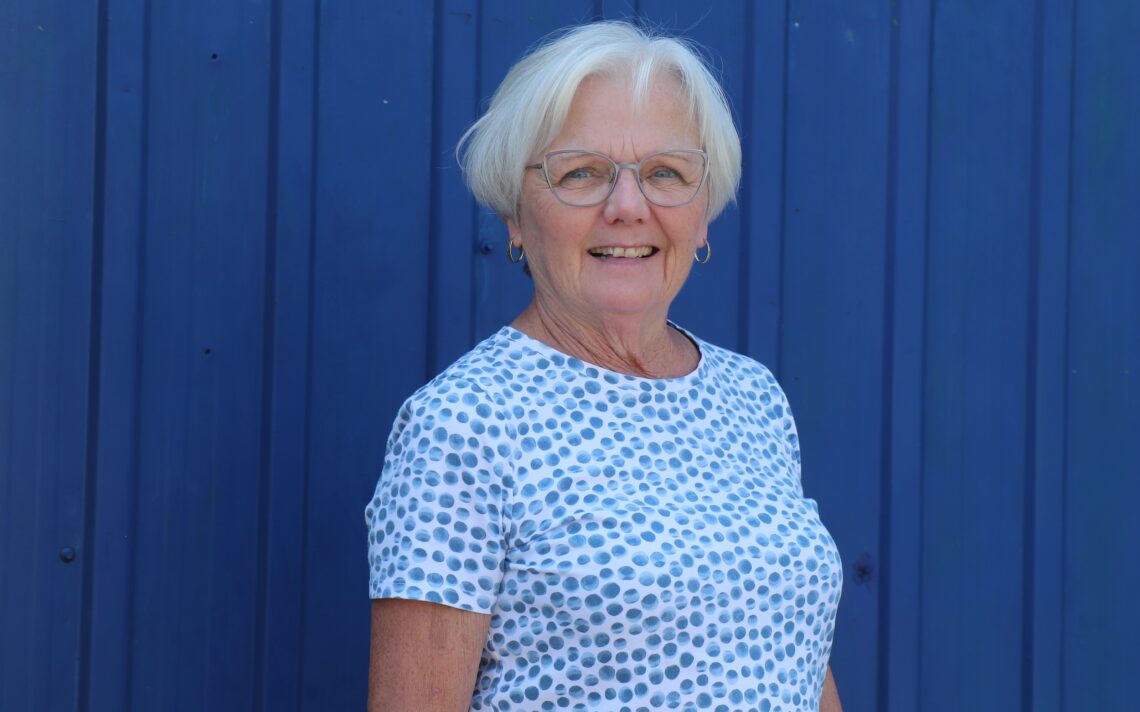
Niagara Olympic Club wants to seize moment
Niagara Olympic Club president Sharon Stewart didn’t waste any time when the Ontario government announced the $200-million Community Sport and Recreation Infrastructure Fund this past March.
Once the criteria for the fund was announced in August, the club was ready to roll in anticipation of the Oct. 29 deadline.
“Although this is a short turnaround time, our application is ready to go. We have a business plan, partnerships, quotes, endorsements and passion,” Stewart said, during a presentation to city council Monday.
The club had worked on its strategic plan in 2021 and 2022 because it knew the facility needed a facelift, starting with a complete resurfacing of the track.
The $1.4 million project is eligible for 50 per cent funding from the province through the fund and the Niagara Olympic Club appeared before city council Monday night asking for: 30 per cent of the capital cost; the extension of the current lease agreement to five years beyond the project completion date; and, a letter of permission from the city to undertake the project. City council agreed to support the application and asked city staff to report back on the request for funding.
“Sometimes, just sometimes the stars align and an amazing opportunity presents itself. This tells me that we have to seize the moment and rebuild the legacy. Our passion has never faded,” Stewart told council.
The ultimate goal is to have the facility ready to host the 2026 Ontario Federation of School Athletics Association track and field championships. It is the South Region’s turn to host that year.
“We had OFSAA in 2003 two years after the track and was build and it would be kind of neat to see OFSAA come back again,” she said.
The plan calls for: shaving off the existing track surface and remediating the underlying asphalt to make sure it’s ready for the new surface; relocating the pole vault runway parallel to the long and triple jump runways to make more space for the athletes and spectators; and, rebuilding the steeplechase pit to match new standards (the new standard for the depth is 0.5 metres and the pit is currently 0.78 metres deep).
“Our facility is unique. It accommodates large track and field meets such as high school, Athletics Ontario and Legion provincial championships because our field events are separate from our track events and we can host multi-age group events,” Stewart said. “We feel that this is a really important part of our community and we want to keep it going. We have been here for 25 years and we want it to be ready for the next 25 years. That is our legacy.”
That legacy is to promote grassroots track and field.
“With all sports, the grassroots level is so important and Moh (Olympic silver medalist Moh Ahmed) is our testament to the grassroots level,” she said. “There is not a lot of money out there for grassroots sports but there is a lot of volunteerism and fundraising and it is important to continue to provide the legacy for grassroots track and field athletes who aspire to be Olympians.”
The NOC facility was vitally important to Ahmed, who spoke in favour of the proposal Monday at council.
“This is where I learned track and field and this where I received my education for basic track and field knowledge. It was where I learned what track and field was and what I was capable of,” he said in an interview last week. “This is where I grew in the span of four years and this is the place that, for me, helped me realize there was something beyond my hometown. It gave me the opportunity to be on teams and compete outside of St. Catharines. In order to dream, you have to have a sense of possibility. That was done here by my coaches.”
The Niagara Olympic Club also serves as a community hub.
“Depending when you come here, there are people walking the track and that’s important. I see older people walking and they can measure their distances and they don’t have to stop for traffic lights,” Stewart said. “It continuous and it is a level safe surface. For other people who want to just come run and stuff, it is an open facility.”
The club’s hosting of events provides an economic impact for the city.
“OFSAA is a huge economic driver and we have hosted many provincial championships. All of those things bring an awareness of the sport to the community but they also bring in a huge economic impact,” Stewart said.
The three-day 2026 OFSAA championships are expected to attract 2,900 athletes from 850 schools, 1,000 coaches, 25 Athletics Ontario officials and 100 volunteers.
“OFSAA recommends you book 600 rooms just for the athletes and that doesn’t count family and spectators,” she said.
Canada Summer Games Park is not able to host multi-age group events because it was designed to host one age group, under-23 athletes for the Canada Summer Games.
“When you have a meet over four to five days, you don’t have to put events on top of each other whereas if you have AO or OFSAA championships you have three age groups so you have to run events six times. You end up with too much conflict on the infield. The throwing cage for discus is on the infield. With high-level performers who are very accurate that’s OK, but when you run track meets with less expertise (from athletes), the discus could go on to the triple jump runway.”
The next phase of Niagara Olympic Club’s plan is to replace the clubhouse in 2025. Phase three would be a concrete pad and new bleachers.
The NOC signed a lease agreement with the city in June 1999 and the club and the city and club each contributed $250,000 to the build. The faculty has been maintained and improved by the club for the past 25 years, including $350,000.00 in capital and maintenance upgrades.



























